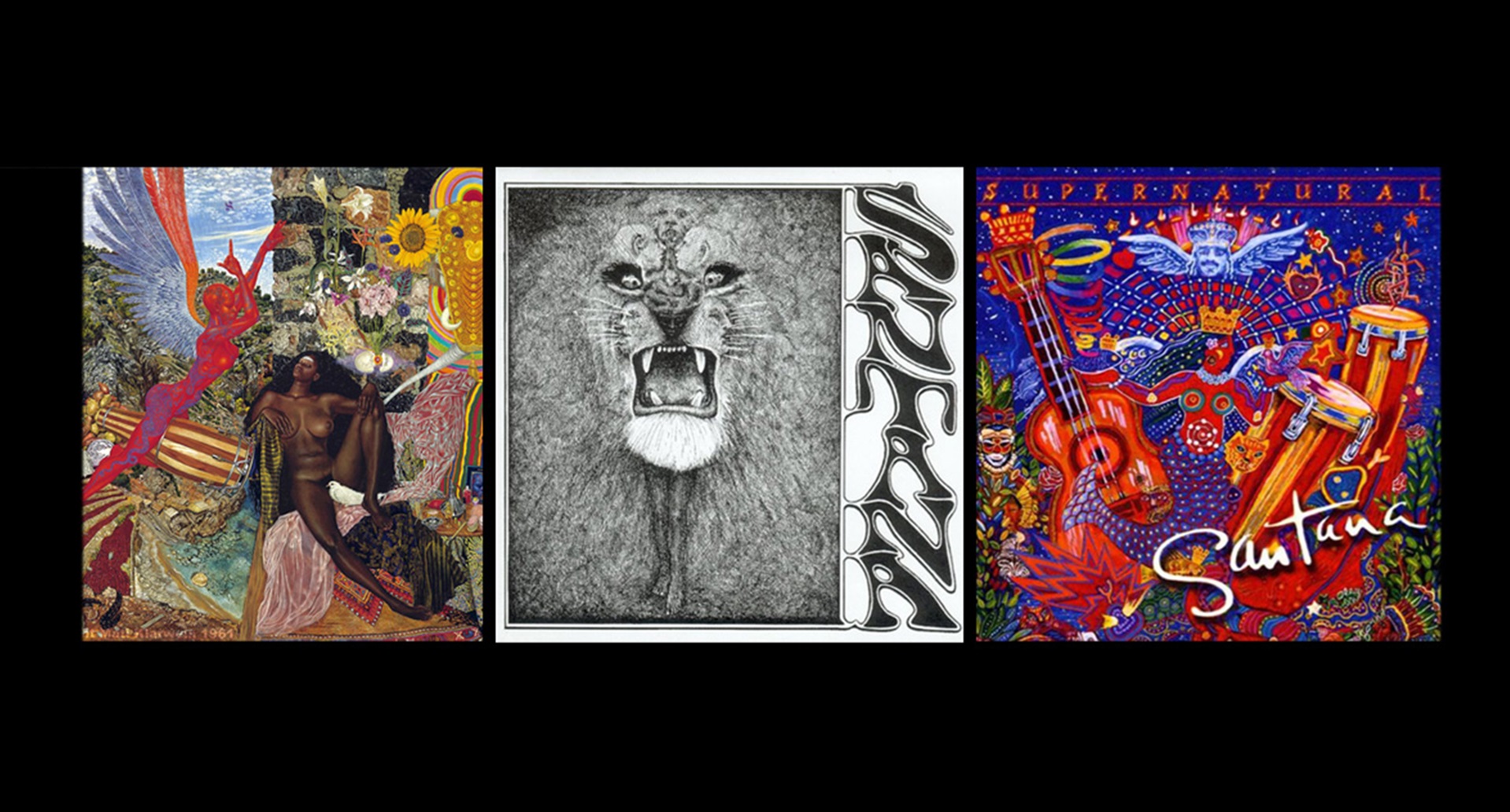Santana Album Cover Art
The artwork displayed on the cover of an album can be just as much a part of the album’s individuality as is its sound. Referring to the remarkable album artwork of the ‘50s, the legendary singer Tony Bennett remarked that, when you bought an album, “you felt like you were taking home your very own work of art.”
The artwork that has graced the covers of Santana’s albums over the last five decades is a testament to that sentiment. Three of our favorite album covers have their own unique story to tell.
Santana by Santana
The drawing of a ferocious lion on Santana’s debut album is really a “fusion” of a variety of images created by Lee Conklin, a poster artist who designed many of the iconic posters that graced the walls of Bill Graham’s Fillmore West. Originally commissioned as a poster for one of Graham’s shows, the cover created by Conklin was inspired by a picture of a lion in a book of animal pictures that he owned; he used that as the basis for his drawing.
Graham liked his posters to be in color, but Conklin decided that this poster would be done in pen-and-ink. It’s a complex drawing which features the head of a lion that’s composed of a number of faces for its cheeks and brows. The nose of the lion is actually another face that is connected to the body of a woman that’s made of the lion’s open mouth and legs that stretch out of it. The lion’s chin? A hula skirt.
Santana asked Conklin to re-draw the poster for the cover of their debut album, Santana, released in 1969. An immediate success, the album went on to peak at #4 on the Billboard 200 pop album chart, the cover’s distinctive lion’s head linked forever to the band.
Abraxas
The album artwork on the cover of Santana’s 1970 album, Abraxas, is the work of the psychedelic surrealist, Mati Klarwein. His 1961 painting, Annunciation, was one of the first paintings that the German-French painter did after relocating to New York City.
Carlos Santana noticed the painting in a magazine and felt that Annunciation conveyed artistically what the group was trying to convey, musically . . . “I’d just discovered that music and color are food for the soul. When we looked at the painting, we said, ‘Man, this is a great feast! Who did this?’”
Santana contacted Klarwein about using it on the cover of Abraxas, and it’s become one of the most celebrated album covers of the 20th century. However, the artwork on the cover was not without its controversy. Columbia Records initially had an issue with releasing an album with a naked woman on the cover, and on one of the released versions, a sticker bearing Time magazine’s review was used to cover the nude.
Mati Klarwein went on to design the cover for Miles Davis’ Bitches Brew, Buddy Miles’ Message to the People, Earth, Wind & Fire’s Last Days and Times, and many other albums.
Supernatural
Supernatural was released on June 15, 1999 and is the 17th studio album recorded by Santana. The album features a number of collaborations with several artists including Eric Clapton, Rob Thomas, Dave Matthews, and Lauryn Hill. The record won nine Grammys and is one of the best-selling albums of all time.
The artwork on the cover of Supernatural is the work of visual artist and Oakland, CA native, Michael Rios. After returning from an extensive trip to Europe in the ‘70s, Rios moved to San Francisco’s Mission District. He went on to create some of the first large murals that made the Mission famous and brought the artist national attention.
Celebrating the 20th anniversary of Santana in 1986, Rios created the mural To Inspire, located on South Van Ness and 22nd St in San Francisco, which is when the two artists became acquainted with one another. The result? A long artistic collaboration and friendship between the two.
The spiritual and collaborative nature of the music on Supernatural was the inspiration for the magnificent artwork displayed on its cover.


